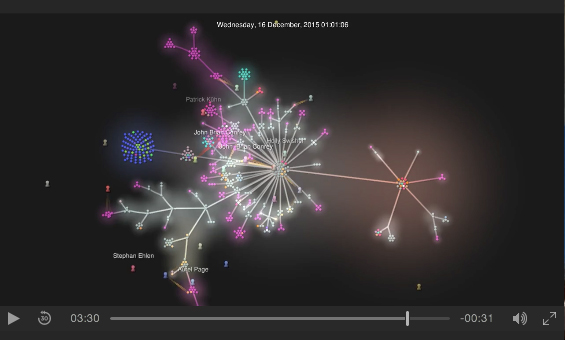
Big Data meets Number Theory

Researchers from ICERM’s special semester “ Computational Aspects of the Langlands Program ” are creating new data-driven models for collaborative research in number theory, culminating in the May 10, 2016 official release of the L-functions and Modular Forms Database (LMFDB) at www.lmfdb.org .
Computation is not new to number theory – in Babylon huge tablets of sines and cosines were created and tables of prime numbers have been studied for centuries. What is new is the capacity of computers to generate comprehensive data on millions of examples, and the growth of large networks of people committed to organizing this information in ways that promote discovery and understanding. “It’s a great example of how thinking about data can impact even purely theoretical disciplines – ICERM’s mission to harness experimental data to understand mathematics fits perfectly with NSF priorities to harness data for 21st century science,” said Jeffrey Brock, chair of the mathematics department and director of the Brown University’s Data Sciences Initiative.
Click for an animation of the growth of the LMFDB
Mathematicians have long been obsessed with counting prime numbers. In 1859, Bernard Riemann developed what is now known as the Riemann zeta function. Sweeping generalizations emerged during the 20th century, culminating in the vast network of theory known as the Langlands program. In 1995, Andrew Wiles and Richard Taylor established Fermat’s Last Theorem using deep theoretical connections between modular forms and L-functions of elliptic curves, all aspects of the Langlands program. Current research focuses on probabilistic and statistical questions about these objects. Data is essential for developing intuition, formulating hypotheses, and introducing students and postdocs to problems in the field.
The fall 2015 ICERM program organizers (Alina Bucur, Brian Conrey, David Farmer, John Jones, Kiran Kedlaya, Michael Rubinstein, Holly Swisher, and John Voight) help lead the LMFDB project. “The LMFDB encompasses a staggeringly large body of knowledge. No one person understands all of it. Such an undertaking could only be possible with a large group of collaborators like the one we assembled at ICERM last semester. The project really took off while we were all in Providence!” according to Conrey, executive director of the American Institute of Mathematics and senior research fellow at the University of Bristol.
Research projects initiated at ICERM will also set directions for future development of the site. Brown mathematics professor Jeffrey Hoffstein was also involved
with the program: “The Langlands program does a great job of presenting the big picture but we need experimental data to develop inspiration about where the field should go next. The data generated by the LMFDB project will provide the fuel we need for the development of new theories, which will in turn require more data. It’s the perfect embodiment of ICERM’s mission.”
